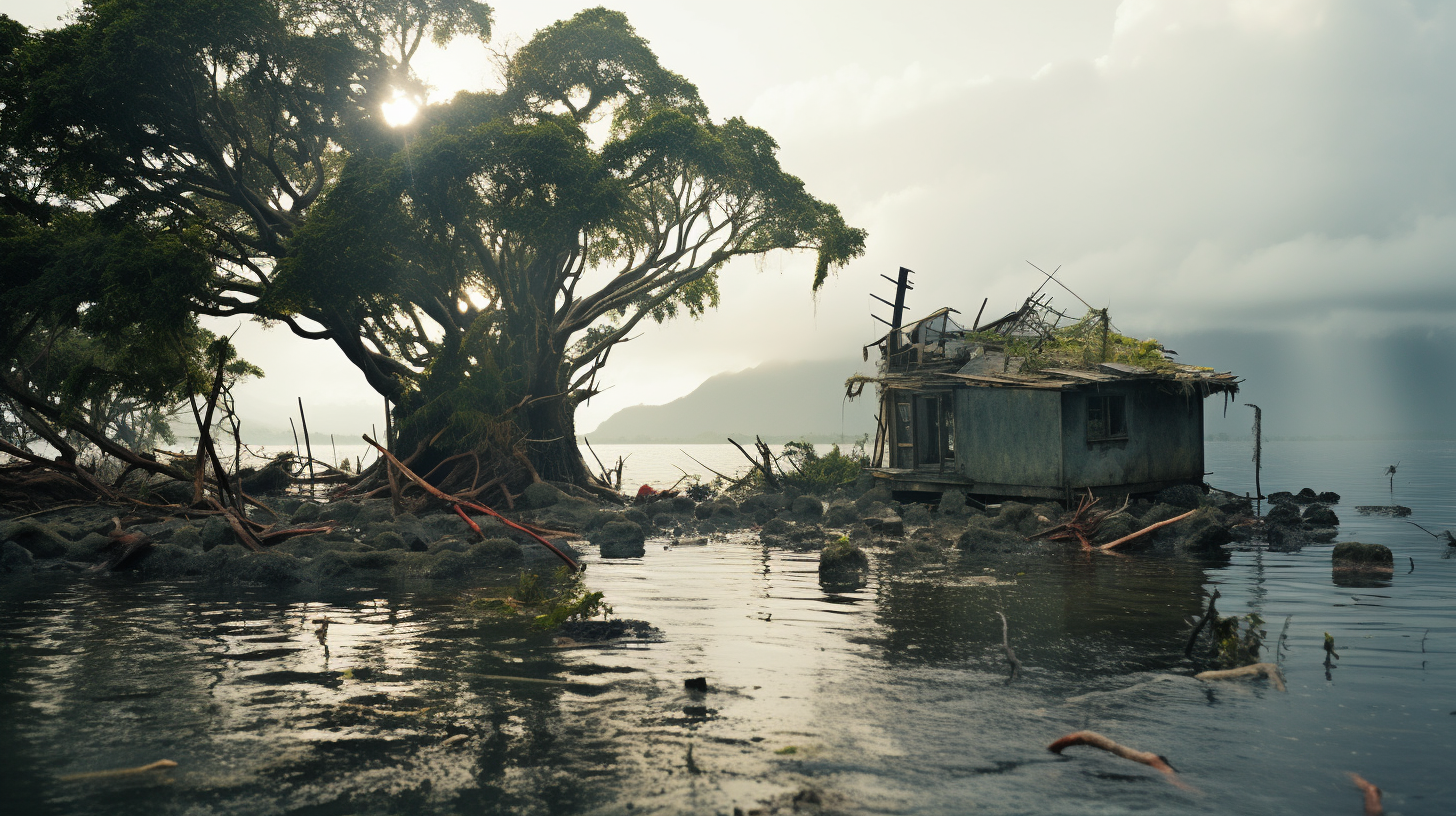The serene image of an island paradise, with its emerald canopies and azure waters, stands at stark contrast against the backdrop of our modern dystopia. Beneath the surface, however, lies a harrowing reality. In this world ravaged by climate change, these once-idyllic refuges represent the final frontier for biodiversity and likewise, the ultimate snare for their unwitting human denizens.
‘Island Edens’, as some have romantically coined them, are peculiar specters in our environmental tragedy. On one hand, they embody the last vestiges of untouched nature; on the other, they’re Nature’s cruel paradox, entrapping organisms, and human communities alike in isolative confines, amidst rising seas and the collapse of resources.
The tale is an ancient one, spiral bound in nature’s lore – islands as fortresses against invaders. Today, that invader is an insidious blend of human-made climate cataclysms. But what if the fortress becomes a prison? What if the very seas that birthed these Edens swell to become their executioner, in a calm, slow-drowning rage?
We’ve peered into the abyss of climate ghettos, where segregation isn’t just social but environmental. Conceptually akin are these island Edens – each stands as an isolated bubble of habitable terrain, communities clinging to their shorelines like barnacles to a sinking ship’s hull. In islands lies escapism for some, enchantment for the tourists, yet for the locals – a trap with the scenery of paradise.
Take, for instance, the precarious harmony of the Maldives. The archipelago represents a dichotomy – a luxury tourist destination, yet also the poster child of climate vulnerability. Here, the sea level’s relentless rise poses the existential question to its people: Where does one flee when the ocean, their life-source, rebels?
Similarly, as islands such as Fiji or the Seychelles market themselves as sanctuaries, the truth festers beneath the brochures. Storm surges, freshwater scarcity, and compromised natural defenses paint a less-than-idyllic picture. The inhabitants, in anticipation of what may come, are faced with a stark choice: ‘Do we stay, and sing with the sinking choir, or do we flee, and become climate nomads?’
Reflecting on this narrative reinforces the vision of our hopeless path. Even in presumed sanctuaries, there is an inherent vulnerability – the Earth’s waning breaths palpable in the rustling of leaves and the lapping of waves. It is a siren’s call to a mankind fixated on deafening itself against the climaxing opera of our destruction.
Visually entrancing, emotionally engrossing, our coverage of these isles wrestles with the dualities of human-nature interplay. Amidst the unraveling of the environment, there lies a profound metaphor: islands as microcosms of Earth itself – isolated in the vastness of space, precariously dependent on a delicate balance.
In closing, we come to ponder – Are these garden isles truly the last strongholds for some fragments of biodiversity, or are they tormenting illusions? Glimpses of Eden dangling before those trapped in the throbbing veins of this dystopia. Can we, as external observers, glean both warning and wisdom from these enclaves? Or is this picture simply another portentous echo of an anthem best encapsulated by Shelley’s immortal words: ‘Look on my Works, ye Mighty, and despair!’Nothing beside remains. Those lines, prophetic in their mourning, serve as our swansong – a climate requiem amid the dissonance of crumbling Edens.
